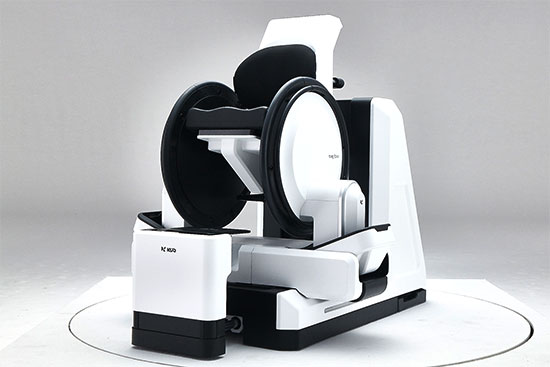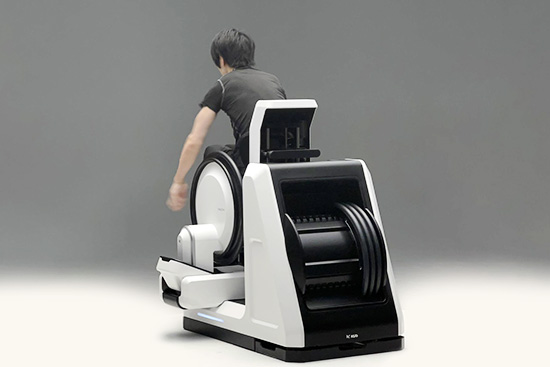bespo: Seating Simulator for Wheelchair Optimization

Concept
‘bespo’ is a seating simulator that finds the best wheelchair configuration.
The wheelchair configuration required for each user is significantly different depending on physique, degree of disability, and way of life. The appropriateness of the wheelchair configuration, such as positions and angles of the seat, backrest, footrest, and wheels, is very important for the user who spends considerable amount of time with it.
With ‘bespo,’ we can electrically drive and adjust all the parts that make up the wheelchair. Since the adjustment can be made while the user is sitting and rowing wheels, the optimal seating can be found with less effort.
After adjusting the seating configuration, it is also possible to measure the rowing torque and rotational speed of the wheel, as well as the center of gravity of the user. Comparing such recorded measurements are helpful information for rehabilitations, allowing quantitative assessments. Since the wheel loads can be controlled in real time manner, furthermore, ‘bespo’ can also be used for exercise training of wheelchair competitions.
‘bespo’ is for various purposes, including the seating optimization, rehabilitation, and exercise training for wheelchair users.

Movie: RDS Co., Ltd.
Specification
Targets
- Optimization of wheelchair seating configuration
- Rehabilitation or exercise training for wheelchair uses or competitions
Functions
- Electrically-driven adjustment of wheelchair seating configuration
- Wheel-rowing-load control (friction/inertia loads)
- Size change of wheels (24~26inch)
- Size/shape change of hand-rims
Measurements and Records
- Wheelchair seating configuration (positions and angles of wheelchair parts)
- Rowing torques and speeds (left/right wheels)
- Center of gravity position (fluctuation)
- Position and fluctuation of mass center of wheelchair user
Electrically powered adjustments
| Seat | height: -100~230 [mm], angle: 0~-20 [deg] |
|---|---|
| Back support | angle: 0~-20 [deg], up/down: 100~300 [mm], back/forth: -30~30 [mm] |
| Lumbar support | back/forth: 0~70 [mm] |
| Footrest | back/forth: 385~735 [mm], up/down: -310~-190 [mm], angle: 0~-25 [deg] |
| Wheel | back/forth: 50~200 [mm], tread width: 360-650 [mm], camber: 0-20 [deg] |
Notes
- Seat and footrest height: vertical distances from the wheel axis
- Wheels and footrest back/forth: horizontal distances from the seat rotation axis (the intersection of the seat and backrest reference planes)
-
Joint Research and Development:
- RDS Co., Ltd.
- National Rehabilitation Center for Persons with Disabilities